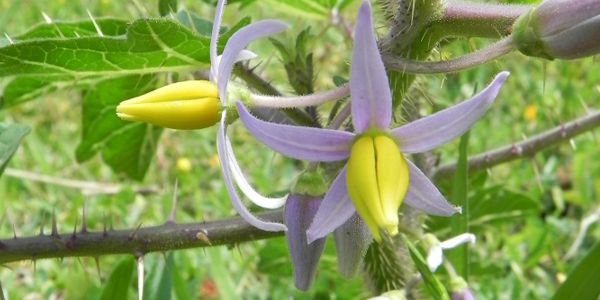Solanum price

Where to buy and sell Solanum, lowest (cheapest) and highest price.
check offers buy sell SolanumToday price for SolanumSolanum wholesale prices 2022
The Current commodity price of Solanum per kg, pound in the world in the global markets
solanum
Price range: 1 - 1 EUR / 1 kg | Market: Mercados de Abastecimientos de Barcelona SA | Date: 2022-10-02
solanum
Price range: 1 - 1 EUR / 1 kg | Market: Mercados de Abastecimientos de Barcelona SA | Date: 2022-06-05
solanum
Price range: 1 - 1 EUR / 1 kg | Market: Mercados de Abastecimientos de Barcelona SA | Date: 2022-05-01
Solanum
The solanum plant is a member of the nightshade family and is native to South America. The plant is also known as the potato plant because it is the main ingredient in potatoes. Solanum plants are easy to grow and can be grown in any type of soil. They are drought tolerant and do not require much water. The plants can be propagated by seeds or cuttings. Solanum plants prefer full sun but will also grow in partial shade. The plants should be fertilized every two weeks with a high-nitrogen fertilizer. Solanum plants can be susceptible to pests and diseases, so it is important to keep an eye on them and treat them accordingly. Solanum plants can be harvested after about two months of growth. The potatoes can be eaten raw or cooked. They can also be used to make potato chips and other snacks. Solanum plants are relatively easy to cultivate and can be grown in a variety of soil types. However, they prefer well-drained soils with a neutral to slightly acidic pH. Solanum plants should be fertilized regularly, especially during the active growing season. Too much nitrogen will produce lush foliage but few flowers or fruits. When grown in containers, solanum plants will need to be watered more frequently than those grown in the ground. Be sure to check the soil regularly, and water when the top few inches are dry. Containerized solanum plants may also need to be fertilized more often than those grown in the ground, as nutrients can leach out of the potting mix more quickly. Solanum plants are generally tolerant of a wide range of growing conditions, but they may be susceptible to certain pests and diseases. Watch for problems such as aphids, whiteflies, and spider mites, which can all suck the sap out of the leaves and stunt plant growth. These pests can usually be controlled with a strong stream of water or by using an insecticide. Leaf spot, powdery mildew, and blossom end rot can also affect solanum plants. These problems are often caused by too much moisture or poor drainage. To prevent or control these diseases, make sure your plants have plenty of air circulation and are not being overwatered.Global solanum production
Solanum is one of the most important crops in the world, with a global production of more than 60 million tonnes annually. The majority of this production is in developing countries, where the crop plays a vital role in food security. More than 70% of the world's solanum production is in Asia, with China, India, and Pakistan accounting for the vast majority of the crop. Africa is the second largest producer of solanum, with more than 9 million tonnes annually. The majority of African production is in Nigeria, where the crop is a major source of food and income. Solanum is also an important crop in Latin America, where it is grown in a wide range of climates and is a major source of food and income for many small-scale farmers. The majority of Latin American production is in Brazil, where the crop is a major component of the country's agricultural sector. Solanum is a widely adapted crop, with a wide range of varieties that can be grown in a variety of climates. The crop is typically grown as a summer or winter crop, depending on the climate. In tropical and subtropical regions, solanum is typically grown as a summer crop, while in temperate regions it is typically grown as a winter crop. Solanum can be grown in a wide range of soils, but it prefers well-drained soils with a pH of 6.0-7.0. The crop is relatively tolerant of drought, but it requires adequate moisture during the flowering and fruiting stages.Download our new
Husfarm App
Stay up to date with the current prieces of agricultural products all over the world.
Do you want to sell agricultural products?
Are you an Agricultural processor looking for high-quality products to buy?
Post an ad for FREE!
